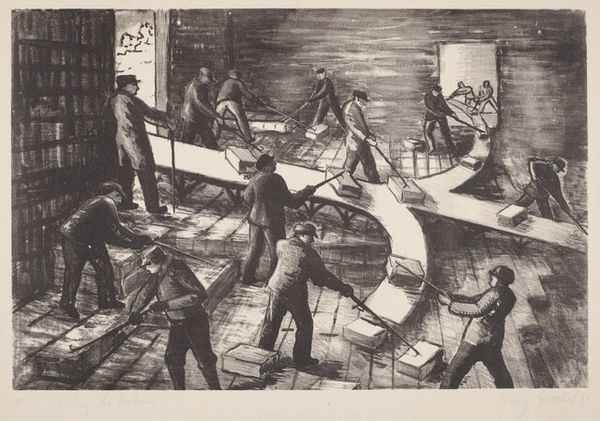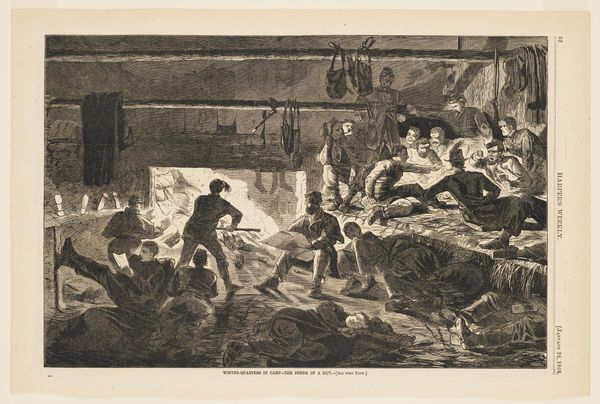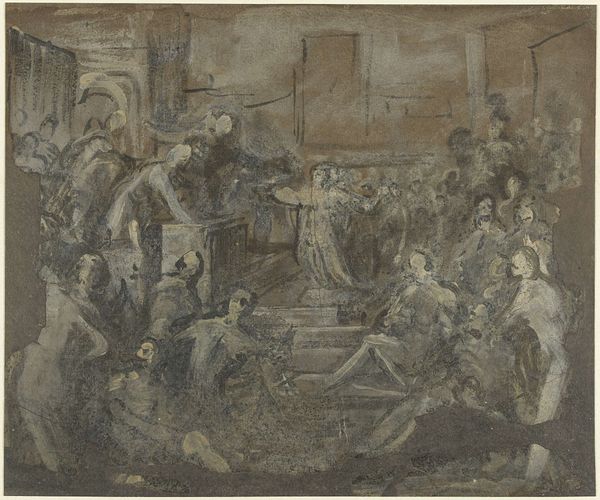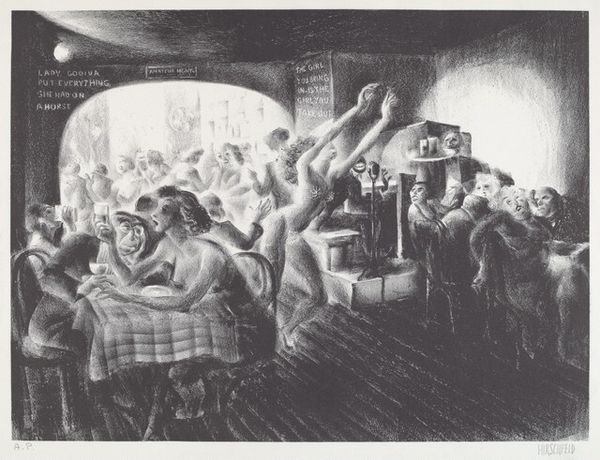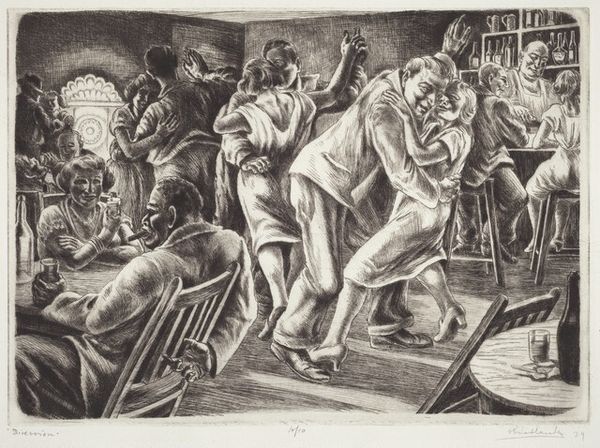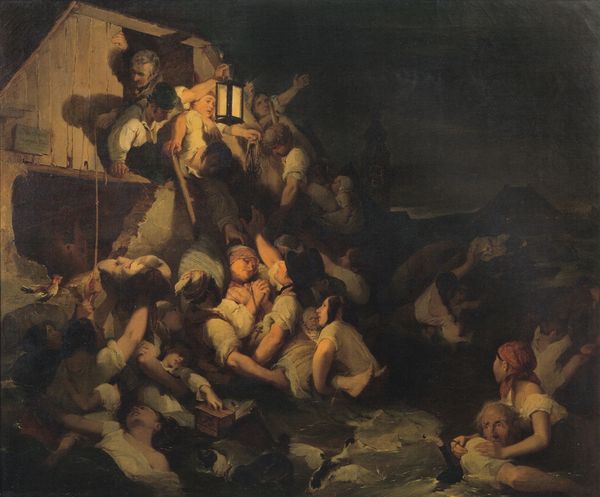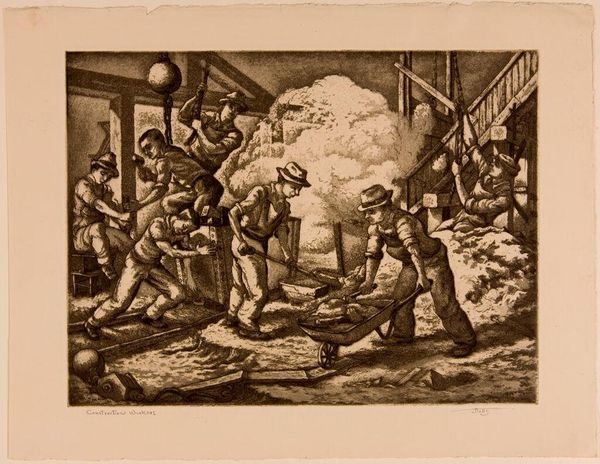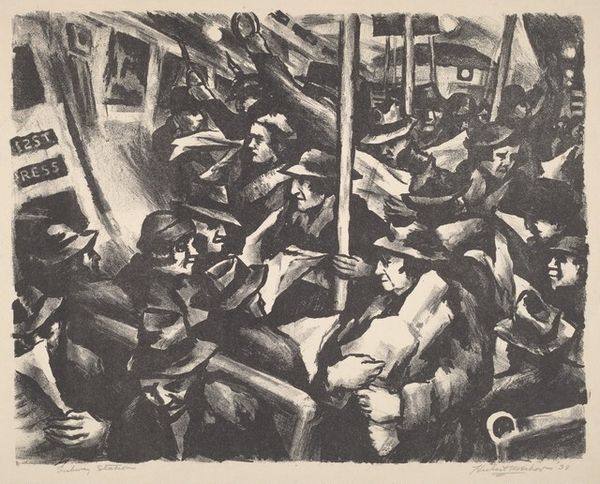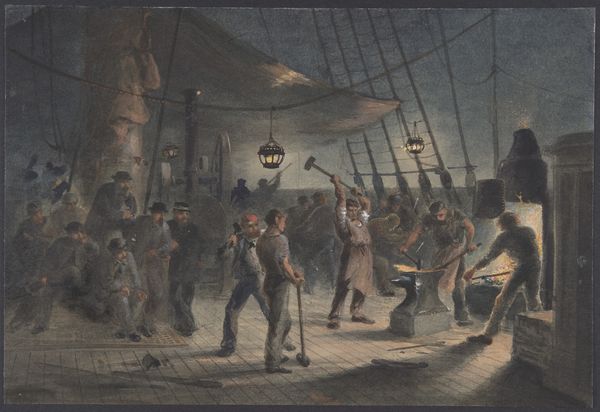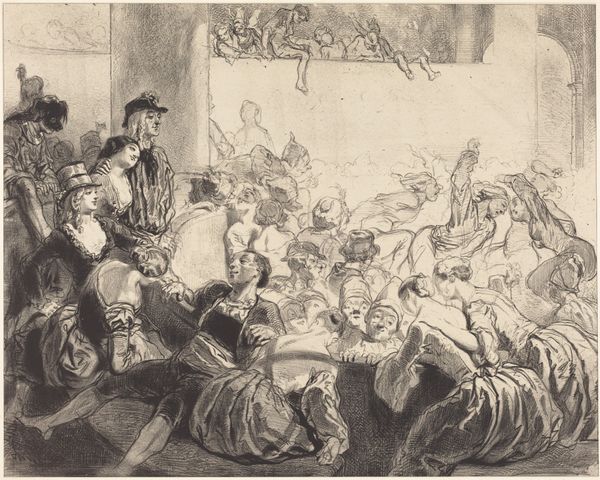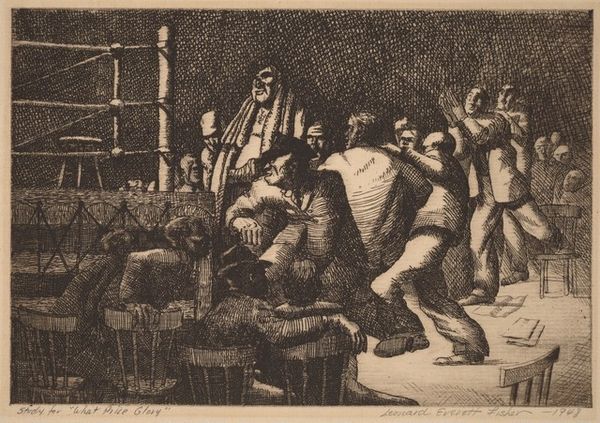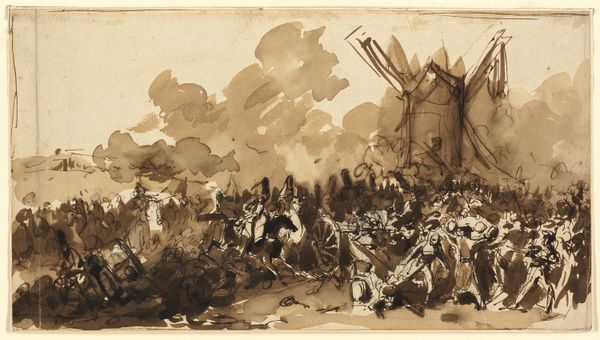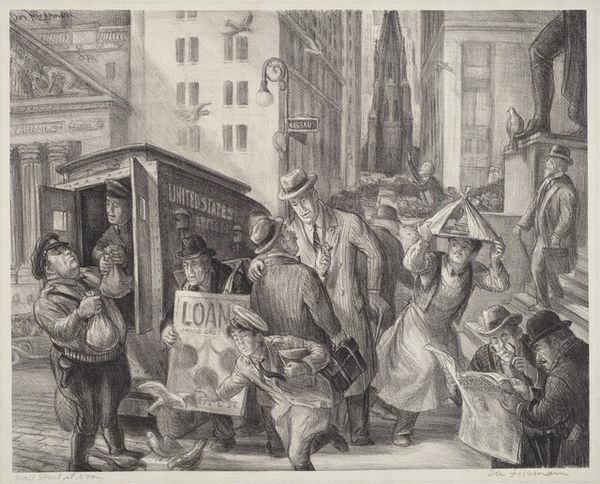
Dimensions: unconfirmed: 2100 x 3100 mm
Copyright: © ADAGP, Paris and DACS, London 2014 | CC-BY-NC-ND 4.0 DEED, Photo: Tate
Curator: Boris Taslitzky’s “Riposte,” housed here at the Tate, depicts a scene of chaos at a dock. Editor: The first impression is overwhelming—a swarm of bodies, all rendered with an almost brutal physicality. What am I seeing? Curator: It captures dockworkers fighting back against collaborators in France during the German occupation. The figures are intertwined, a whirlwind of action. Notice the detail given to their clothing, the cobblestones, and even the metal structure in the foreground. Editor: Yes, the corrugated metal. I'm thinking about the scarcity of materials during wartime—it's remarkable he found enough pigment to create such a large painting! It's all about the labor involved, the physical effort of resistance, mirrored by the artist's own effort. Curator: It's a visceral painting, leaving me to question what it means to resist, and what it means to be human in times of inhumanity. Editor: Indeed, it is the sheer force of labor and materials in this work that leaves a lasting impression.
Comments
Join the conversation
Join millions of artists and users on Artera today and experience the ultimate creative platform.
tate 6 months ago
⋮
In 1949, dockers at Port-de-Bouc, near Marseilles, refused to load the government ships that were being sent to suppress claims for independence in the French colonies in Indo-China. Taslitzky painted Riposte to record his horror at the breaking of the strike by armed police. One policeman resembles Hitler - an especially powerful device for an artist who had been imprisoned by the Nazis. A woman striker seizes the French tricolore, symbol of the Revolutionary ideals. Government ministers were so sensitive to the painting that they ordered its removal from an exhibition in 1951. Gallery label, August 2004
